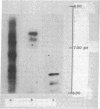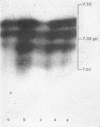Abstract
Rabbit antibody to dinitrophenyl hapten has been elicited by hyperimmunization with a bifunctional cyclic decapeptide antigen, di-dinitrophenyl-gramicidin-S. Examination of the induced antibody by isoelectric focusing, and Sipsian analysis of the haptenbinding data, demonstrated that di-dinitrophenyl-gramicidin-S was capable of stimulating and maintaining the production of a biosynthetically homogeneous antibody in the adult animal.
Keywords: rabbit, isoelectric focusing
Full text
PDF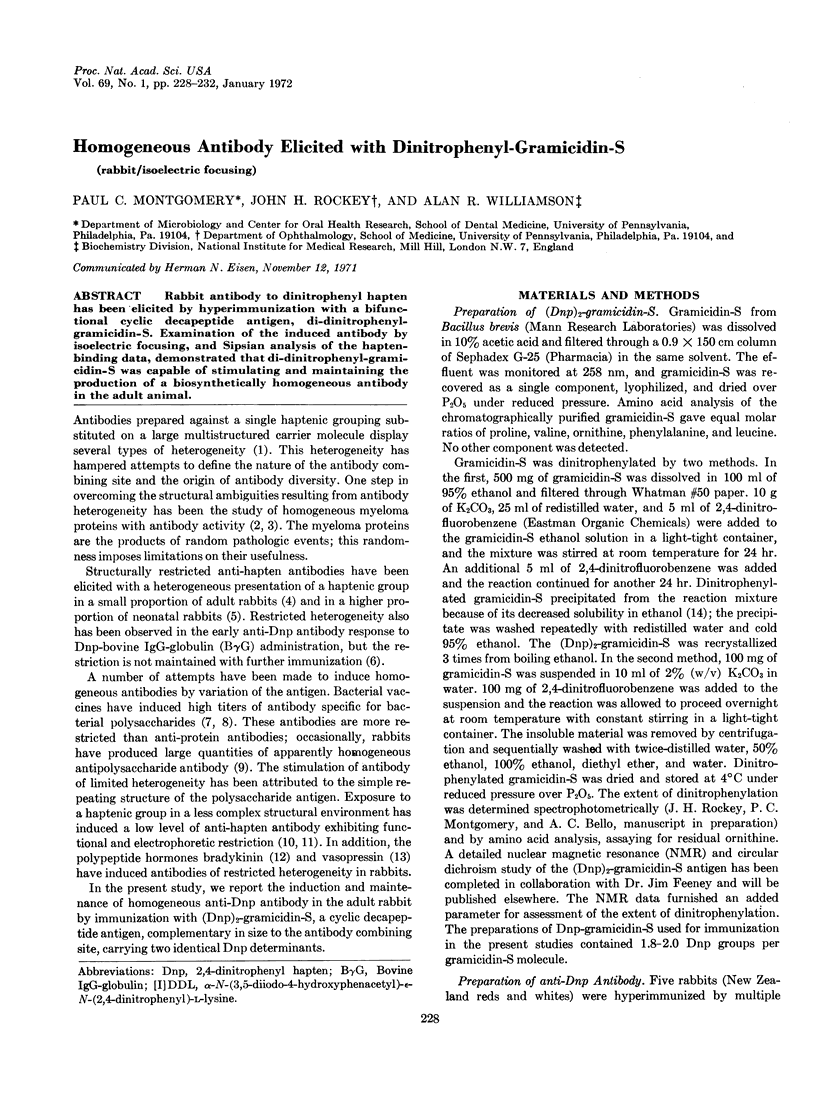
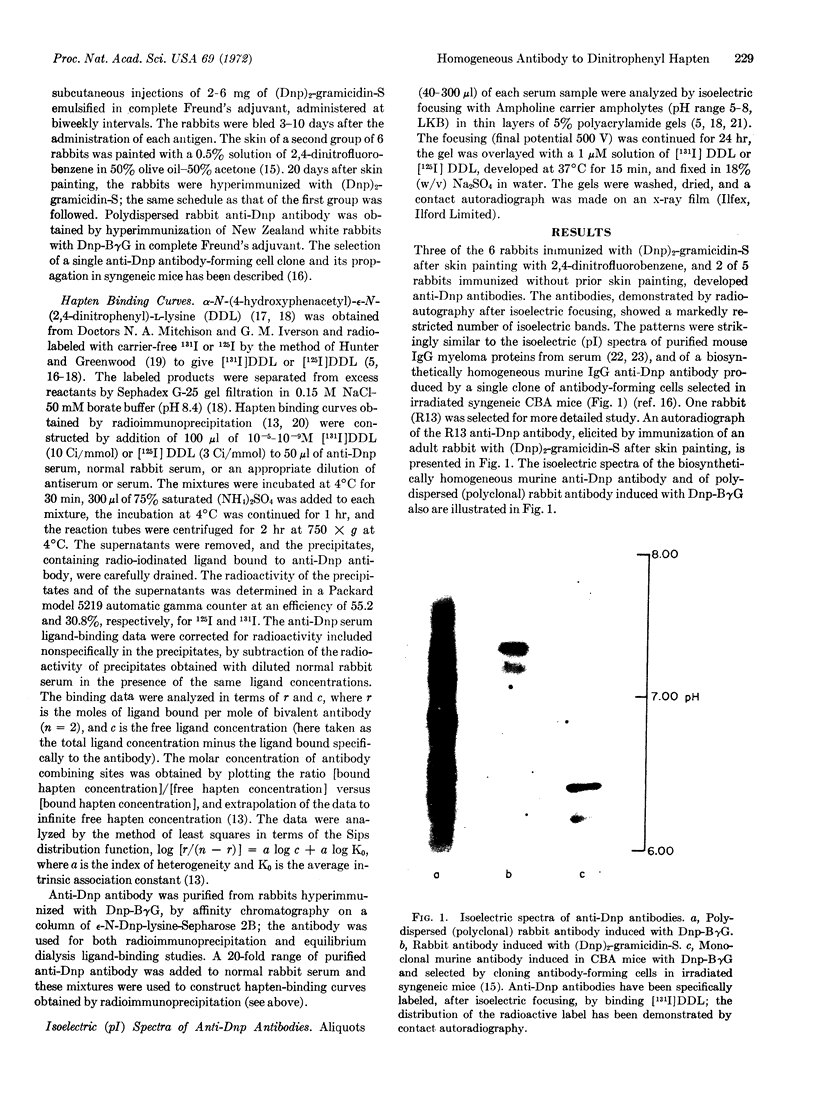
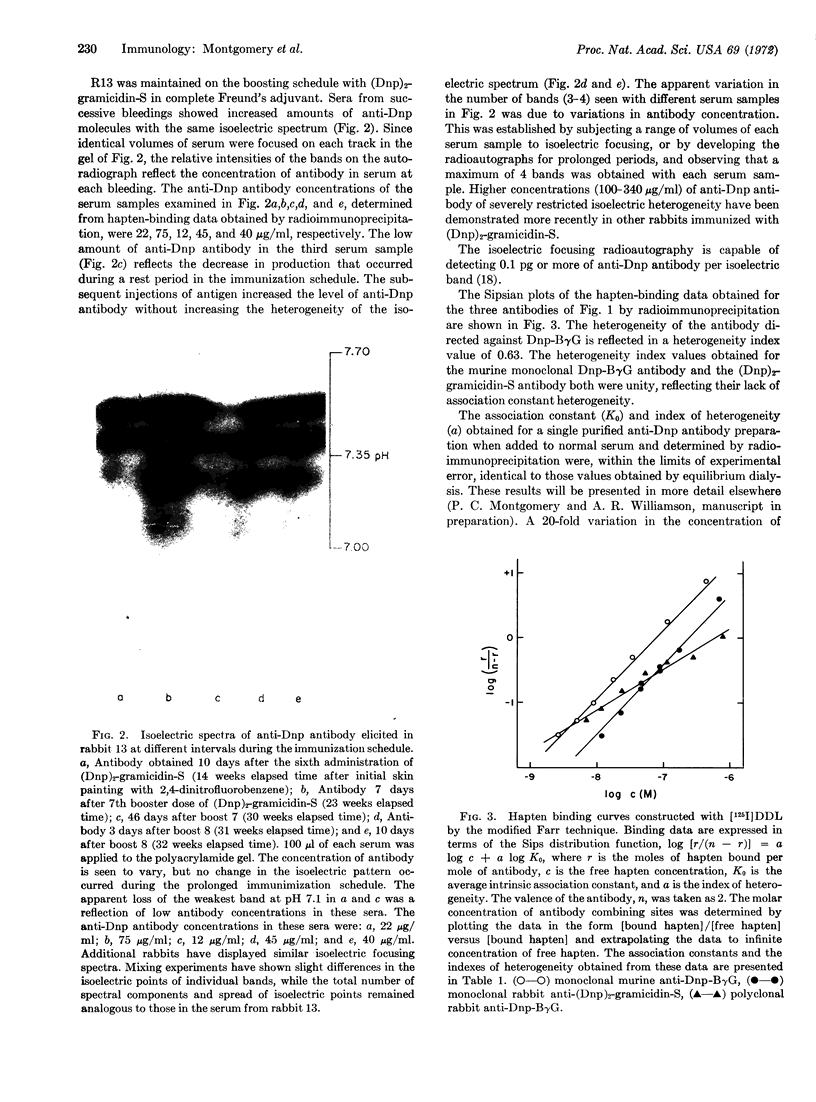
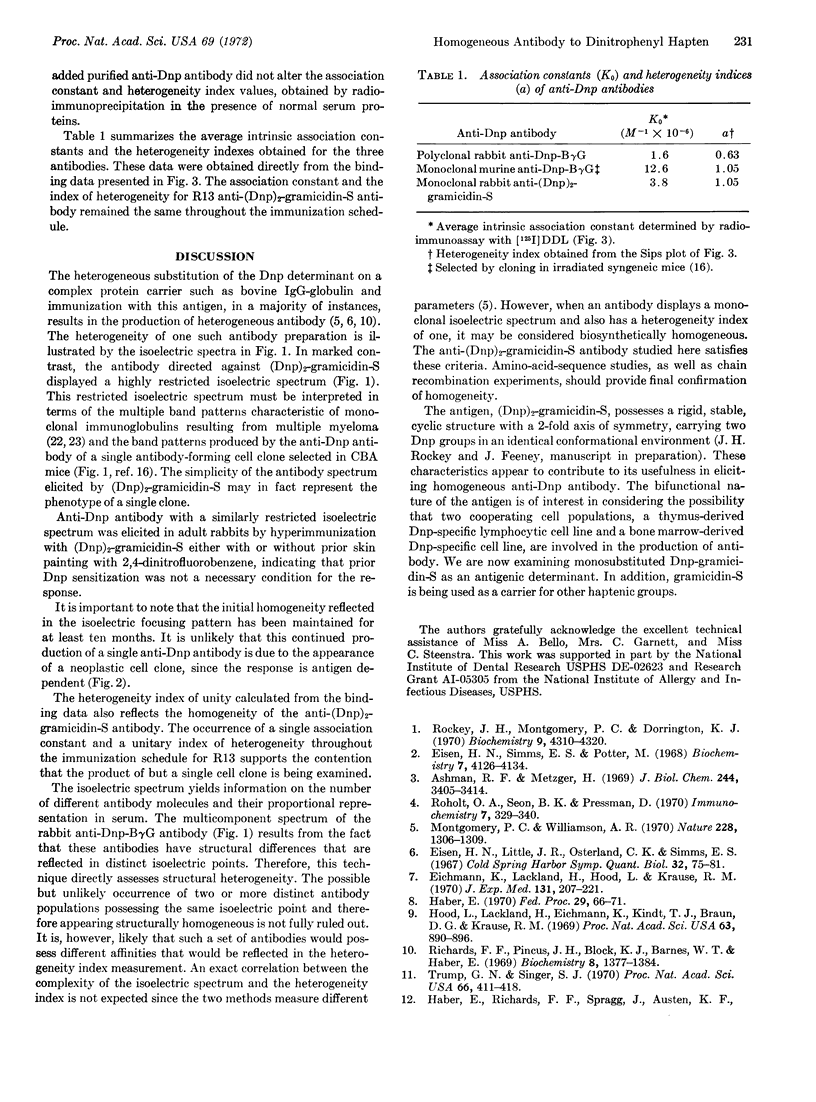
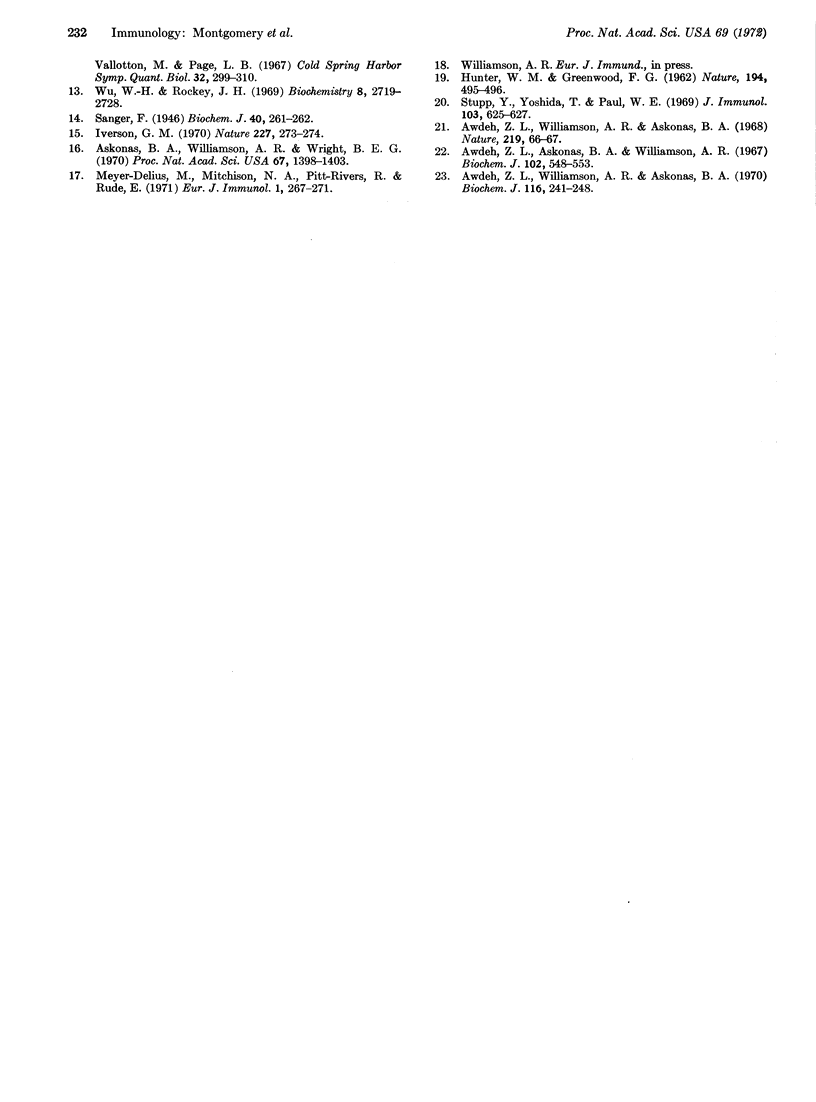
Images in this article
Selected References
These references are in PubMed. This may not be the complete list of references from this article.
- Ashman R. F., Metzger H. A Waldenström macroglobulin which binds nitrophenyl ligands. J Biol Chem. 1969 Jun 25;244(12):3405–3414. [PubMed] [Google Scholar]
- Askonas B. A., Williamson A. R., Wright B. E. Selection of a single antibody-forming cell clone and its propagation in syngeneic mice. Proc Natl Acad Sci U S A. 1970 Nov;67(3):1398–1403. doi: 10.1073/pnas.67.3.1398. [DOI] [PMC free article] [PubMed] [Google Scholar]
- Awdeh Z. L., Askonas B. A., Williamson A. R. The homogeneous-gamma-G-immunoglobulin produced by mouse plasmacytoma 5563 and its subsequent heterogeneity in serum. Biochem J. 1967 Feb;102(2):548–553. doi: 10.1042/bj1020548. [DOI] [PMC free article] [PubMed] [Google Scholar]
- Awdeh Z. L., Williamson A. R., Askonas B. A. Isoelectric focusing in polyacrylamide gel and its application to immunoglobulins. Nature. 1968 Jul 6;219(5149):66–67. doi: 10.1038/219066a0. [DOI] [PubMed] [Google Scholar]
- Awdeh Z. L., Williamson A. R., Askonas B. A. One cell-one immunoglobulin. Origin of limited heterogeneity of myeloma proteins. Biochem J. 1970 Jan;116(2):241–248. doi: 10.1042/bj1160241. [DOI] [PMC free article] [PubMed] [Google Scholar]
- Eichmann K., Lackland H., Hood L., Krause R. M. Induction of rabbit antibody with molecular uniformity after immunization with group C streptococci. J Exp Med. 1970 Jan 1;131(1):207–221. doi: 10.1084/jem.131.1.207. [DOI] [PMC free article] [PubMed] [Google Scholar]
- Eisen H. N., Simms E. S., Potter M. Mouse myeloma proteins with antihapten antibody acitivity. The protein produced by plasma cell tumor MOPC-315. Biochemistry. 1968 Nov;7(11):4126–4134. doi: 10.1021/bi00851a048. [DOI] [PubMed] [Google Scholar]
- HUNTER W. M., GREENWOOD F. C. Preparation of iodine-131 labelled human growth hormone of high specific activity. Nature. 1962 May 5;194:495–496. doi: 10.1038/194495a0. [DOI] [PubMed] [Google Scholar]
- Haber E. Antibodies of restricted heterogeneity for structural study. Fed Proc. 1970 Jan-Feb;29(1):66–71. [PubMed] [Google Scholar]
- Hood L., Lackland H., Eichman K., Kindt T. J., Braun D. G., Krause R. M. Amino acid sequence restriction in rabbit antibody light chains. Proc Natl Acad Sci U S A. 1969 Jul;63(3):890–896. doi: 10.1073/pnas.63.3.890. [DOI] [PMC free article] [PubMed] [Google Scholar]
- Iverson G. M. Ability of CBA mice to produce anti-idiotypic sera to 5563 myeloma protein. Nature. 1970 Jul 18;227(5255):273–274. doi: 10.1038/227273a0. [DOI] [PubMed] [Google Scholar]
- Meyer-Delius M., Mitchison N. A., Pitt-Rivers R., Rüde E. Synthesis of a radioiodine-labeled 2,4-dinitrophenyl-hapten and its use for binding assays. Eur J Immunol. 1971 Aug;1(4):267–271. doi: 10.1002/eji.1830010410. [DOI] [PubMed] [Google Scholar]
- Montgomery P. C., Williamson A. R. Molecular restriction of anti-hapten antibody elicited in neonatal rabbits. Nature. 1970 Dec 26;228(5278):1306–1308. doi: 10.1038/2281306a0. [DOI] [PubMed] [Google Scholar]
- Richards F. F., Pincus J. H., Bloch K. J., Barnes W. T., Haber E. The relationship between antigenic complexity and heterogeneity in the antibody response. Biochemistry. 1969 Apr;8(4):1377–1384. doi: 10.1021/bi00832a011. [DOI] [PubMed] [Google Scholar]
- Rockey J. H., Montgomery P. C., Dorrington K. J. Equine antihapten antibody. Studies on the primary structure and conformation of equine immunoglobulins. Biochemistry. 1970 Oct 27;9(22):4310–4321. doi: 10.1021/bi00824a011. [DOI] [PubMed] [Google Scholar]
- Roholt O. A., Seon B. K., Pressman D. Antibodies of limited heterogeneity: L chains of a single mobility. Immunochemistry. 1970 Apr;7(4):329–340. doi: 10.1016/0019-2791(70)90236-3. [DOI] [PubMed] [Google Scholar]
- Sanger F. The free amino group of gramicidin S. Biochem J. 1946;40(2):261–262. [PMC free article] [PubMed] [Google Scholar]
- Stupp Y., Yoshida T., Paul W. E. Determination of antibody-hapten equilibrium constants by an ammonium sulfate precipitation technique. J Immunol. 1969 Sep;103(3):625–627. [PubMed] [Google Scholar]
- Trump G. N., Singer S. J. Electrophoretically homogeneous anti-DNP antibodies with restricted isoelectric points elicited in mice by immunization with the antigen papain-S-DNPL. Proc Natl Acad Sci U S A. 1970 Jun;66(2):411–418. doi: 10.1073/pnas.66.2.411. [DOI] [PMC free article] [PubMed] [Google Scholar]
- Wu W. H., Rockey J. H. Antivasopressin antibody. Characterization of high-affinity rabbit antibody with limited association constant heterogeneity. Biochemistry. 1969 Jul;8(7):2719–2728. doi: 10.1021/bi00835a005. [DOI] [PubMed] [Google Scholar]



